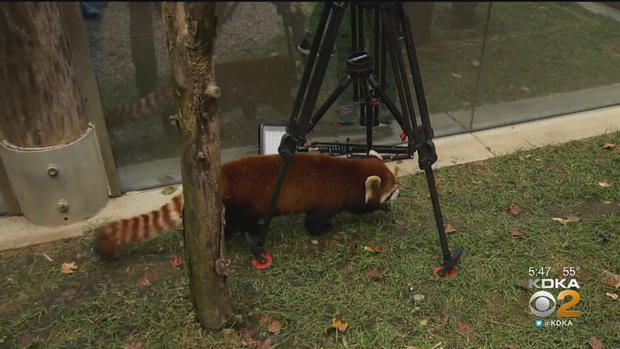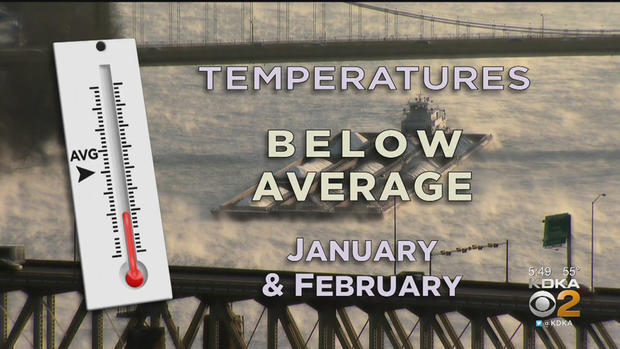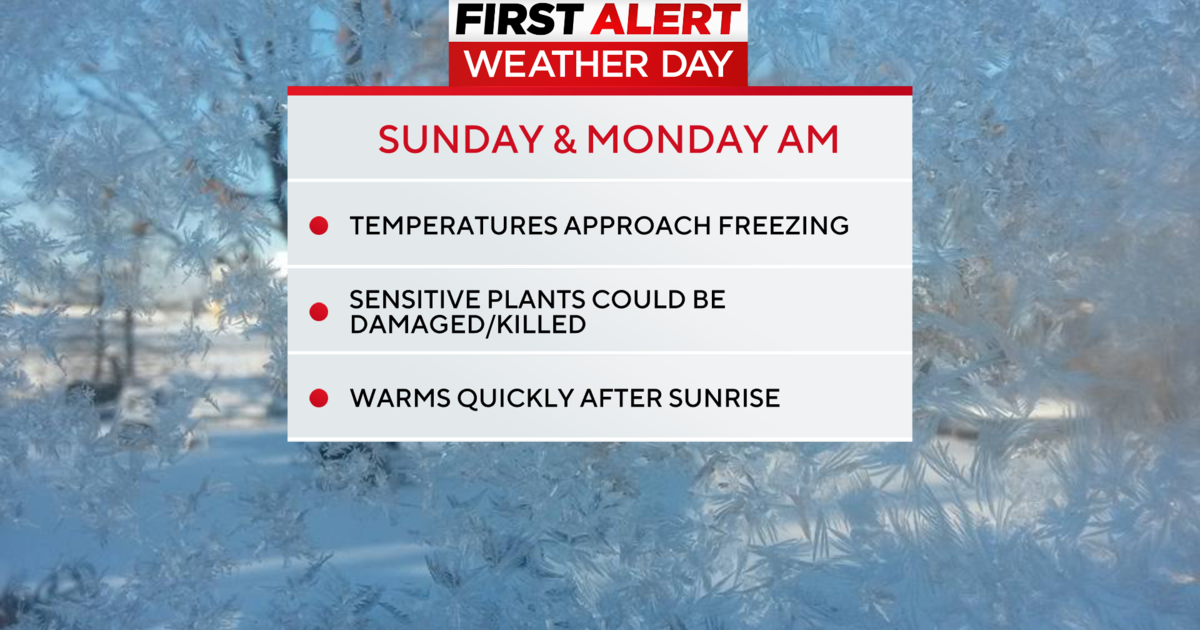Meteorologist Ray Petelin's 2019-20 Winter Weather Forecast
PITTSBURGH (KDKA) -- Like it or not, winter is coming and as long as there has been winter, there's probably been someone trying to figure out how rough it's going to be.
There's an abundance of old-fashioned ways to do this, or old wives' tales, including a lesser-known one about a sunny October 9.
For the record, October 9 in Pittsburgh this year was warm and sunny with not a cloud in the skies.
That's great until you hear that according to the legend, sunshine on October 9 means the following winter will be very cold.
Honestly, that's more coincidental than meteorological.
So let's look into some of the old wives' tales that seek nature's advice for a prognostication.
Punxsutawney Phil always gets a lot of forecasting credit, but there are other animals known for their forecasting, like the woolly bear or woolly worm.
Legend states if the stripes on them are a little bit on the darker side, a bad winter is coming and if they're on the lighter side, a mild winter is ahead.
This year, though, a couple of woolly bears spotted in Harrison Township were giving off mixed signals... one of a soft winter, the other of a hard one.
So perhaps it means a mild start and rough finish to winter?
Looking to animal behavior might be more telling than hair color, though.
Like if you see squirrels gathering a lot of nuts, it supposedly means they're preparing for a rough winter.
A local couple's car recently made national news for this, as their neighborhood squirrel was stocking up... big time!
The trees are also dropping a lot of nuts this year, which has often been seen as a sign of a difficult winter ahead.
Now, these examples come from specimens in random places, and that could lead to random results.
But what about animals that are under constant observation, like the red pandas at the Pittsburgh Zoo and PPG Aquarium.
Turns out, they're looking a little different this fall.
"They have a big, long, thick furry tail and they're not as furred out as they usually are", said the zoo's Curator of Kids Kingdom and Reptiles Henry Kacprzyk.
Less fur would usually mean they aren't planning on needing as much heat as winter approaches.
"It's probably an indication that at least our early winter will not be as bad as, perhaps, last winter was. They can't predict things like these vortexes that bring down cold weather from our polar caps, but I think, in general, they're an indication that we're not going to have colder weather coming up soon", said Kacprzyk.
We can even look to animals that don't like the cold for a clue... like the zoo's 430-pound alligator, which needs warm temperatures to maintain its body temperature and also needs to time out warm temps to digest its food.
Kacprzyk says, "he actually stayed eating and feeding longer, going into October than he had done last year, so it may be indicative of the warmer weather lasting longer or, perhaps, a milder winter."
So, we know what the animals, trees, and grandma's old forecasting techniques are saying for the upcoming winter, but what is the atmosphere saying about the upcoming season?
Well, it looks like nature's old-fashioned predictors and the more high-tech methods are sort of on the same page, at least this year.
After checking sea surface temperature trends in certain parts of the world and comparing that with the past, the storm track -- or the predominant atmospheric roadway for storms -- will be near the Pittsburgh area this winter.
Translation? That means frequent bouts of snow and rain.
And with that track predominantly south of Pittsburgh, overall, we're looking at a slightly colder than average winter.
Let's break it down by temperature and snowfall.
First up, temperatures.
Winter looks to get off to a sluggish start in November and December, starting with average to just above-average temperatures.
The new year, though, comes with a new attitude from Old Man Winter.
Temperatures look to drop below average in January and February.
Then we'll get out of the deep freeze with temperatures returning to near-normal levels in March.
Now to snowfall.
I'm projecting near average snowfall for both November and December.
But then the snow machine turns on at the start of 2020, bringing normal snowfall accumulation for both January and February.
March looks like a quick transition to spring, though, with below-normal accumulations expected.
Bottom line?
Winter starts slow, then kicks into gear in January and February with early bets on Punxsutawney Phil signaling spring-like weather to arrive right on time.






